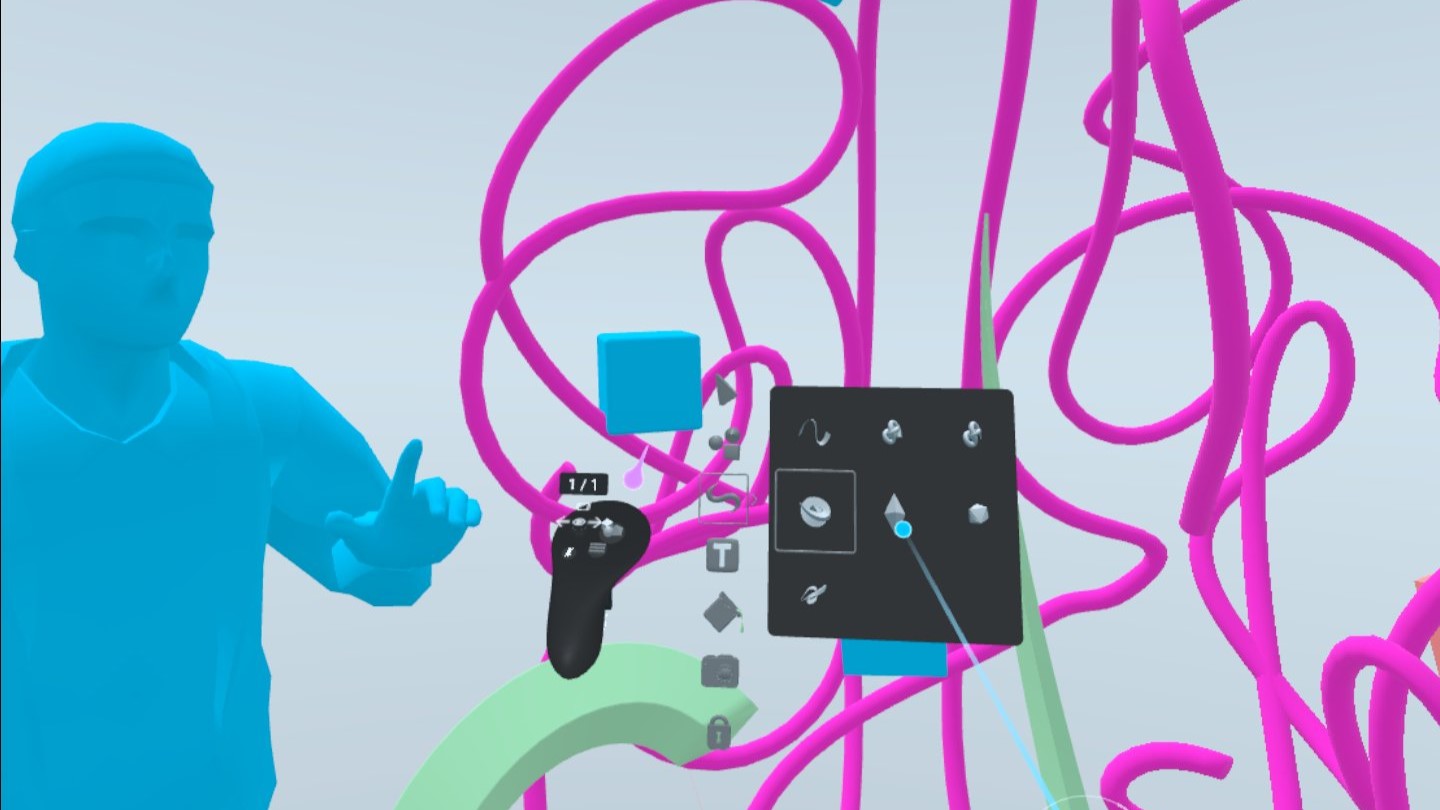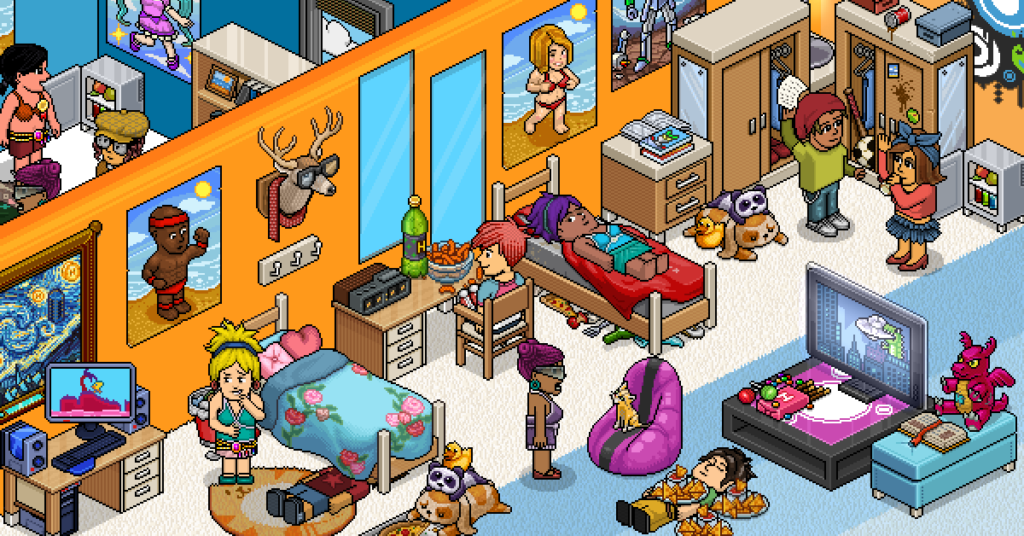
23 Aug The Metaverse from a Designer’s Perspective
Elijah here. As the XR Design Strategist at Futurus, I create virtual worlds for clients, mostly around safety training simulations. Prior to this role, I operated a virtual reality arcade for 4 years. I’ve also been trying to build my own “corner” of the metaverse since roughly 2014. I’d like to share some of my insights (and strong opinions) as a designer in this field.
Beyond the Hype
The metaverse is not what it has been hyped up to be…yet. The metaverse is an idea born from the dystopian novel, Snow Crash, meant to warn us against the perils of an internet world controlled by monopolies (amongst other things). However, it was centered around the idea of the internet evolving into an immersive experience, where you have interconnected 3D worlds instead of 2D websites.
Second Life, Habbo Hotel, GeoCities, etc., were the immediate, early versions of this idea coming to life. It wasn’t until virtual reality technology became viable over the last few years that this idea resurfaced and exploded. Nowadays, the metaverse is another marketing term thrown around by people wanting to own the internet. Still, there is much to be excited about when it comes to building the future of the internet.

Source: Habbo.com
The idea that you can explore the web similar to how you can in the physical world, but with more conveniences and self-expression, is exciting for just about anybody. Being able to be who you want on the internet through a 3D avatar rather than just a 2D profile picture allows you to be immersed in the digital world more than ever before.
This immersion is what makes something like design very powerful in the metaverse. The ability to prototype various types of concepts in a 3D world means you can test your designs without having to spend the time/money to create a physical prototype.
Furthermore, the metaverse is defined by its interoperability and collaboration. So being able to design your products in a virtual world where your coworkers, customers, and stakeholders can jump in to share feedback or even participate in your design process could be very powerful. Subsequently, being able to then take those designs and export them to other design tools where more details can be added, and/or import designs from other places into your platform of choice feels like a superpower!
But it can also be very disruptive if not done correctly. If you require people to work in VR even though their specific job or activity is not at all improved by the medium, it could be an unnecessary inconvenience. Activities that are more easily done in a 2D format, such as paying bills and scrolling through feeds probably shouldn’t be done in XR unless you have figured out a way to utilize the extra spatial dimensions to improve the experience.
Most importantly, simply making a virtual storefront or other virtual real estate does not a metaverse make. There needs to be a very clear and appealing use case as to why people would actually want to engage in your ‘IP’ virtually that real user research has identified as a serious pain point. Either way, the metaverse is merely an idea for a future internet where people can create, share, and explore digital things in an immersive, 3D world.
The Evolution of Design for the Metaverse
The evolution (i.e. creation) of the metaverse means design can be done collaboratively and contextually. During the last two decades, design went from a fairly new and somewhat siloed process where you sketched on paper and via tools like OmniGraffle, Adobe, or Sketch, into something far more collaborative where you can easily share your concepts via tools like Invision or Figma. Along the way, these tools have had many problems and limitations, but the biggest for those like myself was the inability to do anything spatial.
For quite a few years, XR designers (i.e. people designing for augmented reality, mixed reality, or virtual reality) either had to use game design tools like Unity, or had to figure out clever ways of using typical 2D tools to visualize 3D experiences and interfaces. Some even went back to paper prototyping via cool cardboard cutouts (shout out to Schell games and their brown boxing technique) that they could move around!
But with the onset of tools like Tilt Brush, Gravity Sketch, Spline 3D, and ShapesXR, you can design your concepts in 3D with relative ease.

Tools like Spatial.io are less about creating and more about showcasing and encouraging team collaboration. 3D Designers can upload 2D mockups and even 3D models of prototypes to more easily present deliverables. This is a clear improvement over merely showing slide decks or passing emails with attachments/links back and forth to view your concepts.
My personal favorite at the moment is ShapesXR. This is one of the most user-friendly and feature-complete tools I’ve seen thus far for designing in XR. Not only can you quickly create in 3D, but you can easily show different scenes and interaction states (similar to artboards in traditional design tools). You can smoothly copy an entire project to iterate and then link them back to each other. Most importantly, you can nigh effortlessly share your designs with others via the web browser (read-only view into the 3D world) and via a VR headset (where you can make edits on the fly together in virtual reality).
I could go on about how much of a step up this is for XR design, but the take-home point is that now, you can bring people into not just your design but the *context* for your design. You can create virtual environments that simulate the real-world spaces your products or services will live within. This immersion is a huge benefit that can result in more cohesive designs that feel more aligned with the customer, environment, and problem you are solving.
Understanding the Metaverse
As stated earlier, the metaverse is just the future of the internet. Anybody who says they are building “a metaverse” is practically saying they are building an internet… what they probably mean is that they are building a virtual world for their specific audience, environment, or need.
Just as it is important for a designer to understand big technological trends, such as going from web to mobile, understanding what the metaverse (really) is will help you stay ahead of the game (and see beyond the hype). If you can understand exactly what use-cases would benefit from creating virtual worlds or interoperability between worlds/tools, or even web3 (i.e. the use of blockchain technology), then you can better communicate with stakeholders, clients, and peers about which technologies to use, or avoid, and why.




